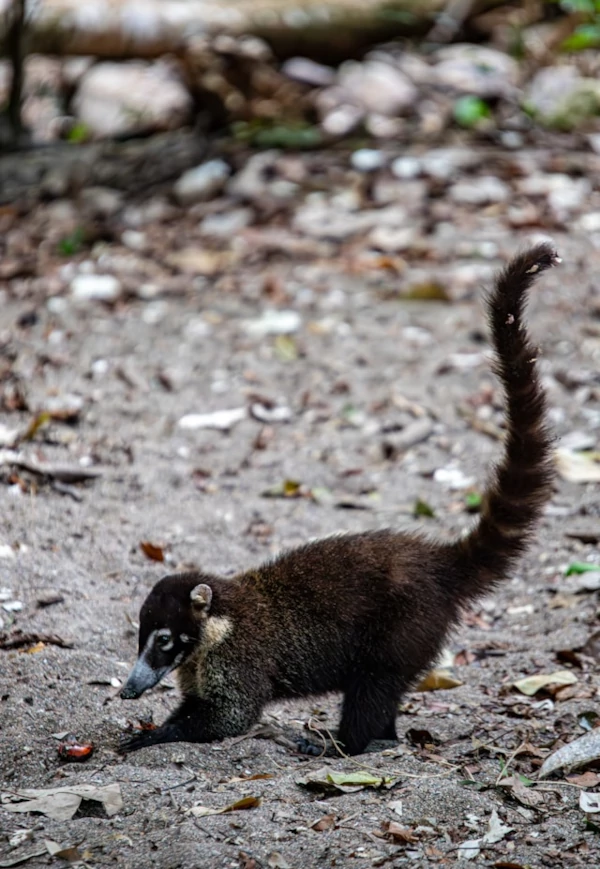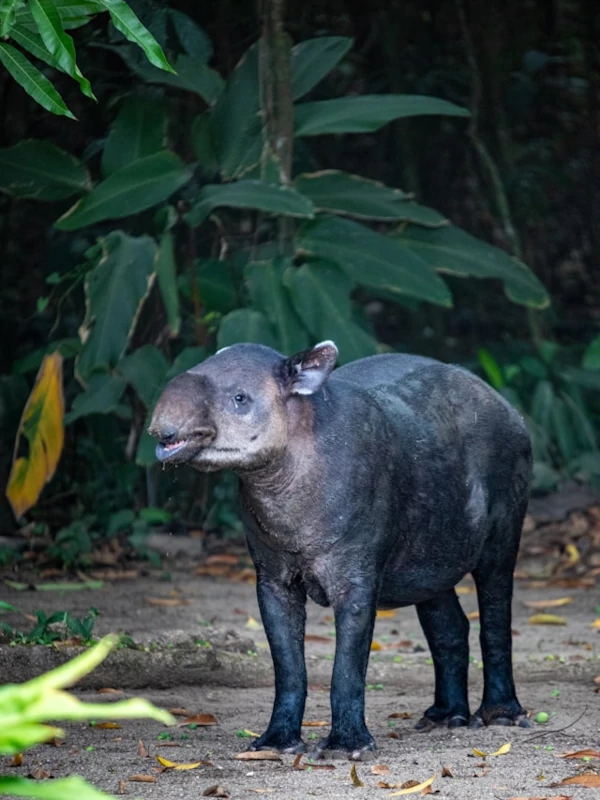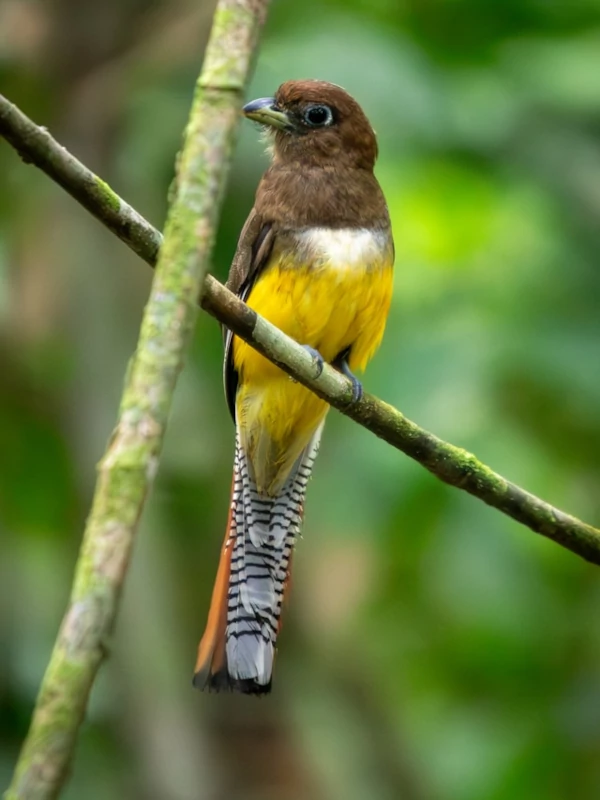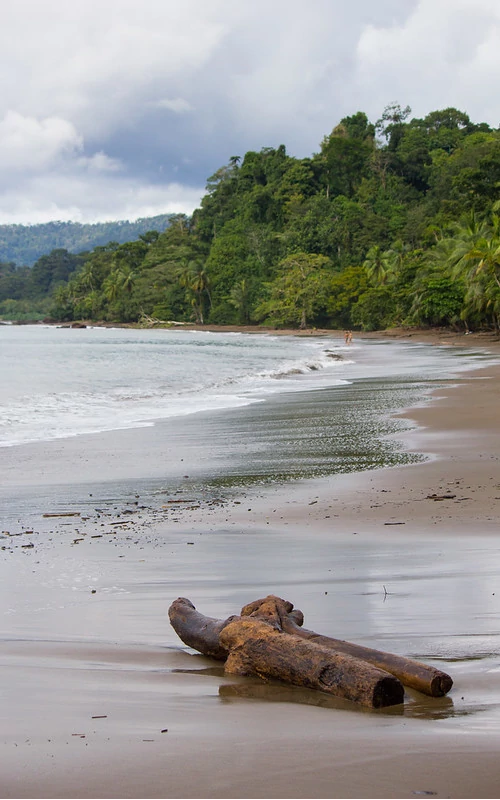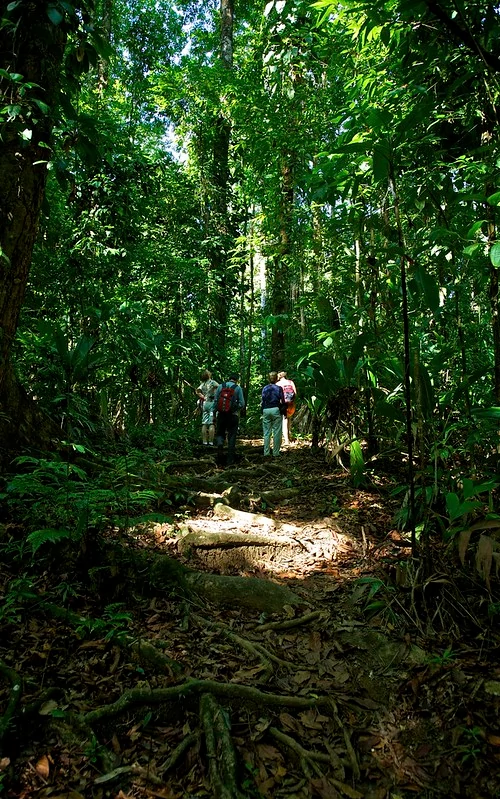Renowned as one of the most biologically intense places on Earth, this park boasts lush rainforests, untouched beaches, and an astonishing array of wildlife, including jaguars, scarlet macaws, and humpback whales. Whether you’re hiking its rugged trails, spotting rare animals, or soaking in its natural beauty, Corcovado promises an unforgettable journey into the heart of Costa Rica’s wilderness.
Corcovado National Park: Wildlife, Hiking, and Costa Rica’s Untamed Wilderness
Why Visit Corcovado National Park?
A True Wilderness Experience
Corcovado National Park is often called “the crown jewel of Costa Rica’s national parks”, and for good reason. Covering over 400 square kilometers of rainforests, mangroves, and unspoiled beaches, it offers visitors a rare chance to immerse themselves in one of the most untouched ecosystems in the world. Whether you’re trekking through dense jungle or relaxing by the shores of the Pacific Ocean, Corcovado delivers a sense of raw, untamed beauty that’s hard to find anywhere else.
The Crown Jewel of Costa Rica’s Biodiversity
National Geographic once described Corcovado as “the most biologically intense place on Earth”, and it lives up to the hype. This park is home to 5% of the planet’s biodiversity, boasting an incredible variety of plant and animal life. From howler monkeys and scarlet macaws to the elusive jaguar, the wildlife here is unparalleled. It’s no wonder Corcovado is a dream destination for nature lovers, birdwatchers, and wildlife photographers. Learn more about the park’s incredible biodiversity in our post: Unique Wildlife of Corcovado National Park.
Off-the-Beaten-Path Adventure
Corcovado offers a level of adventure that few other destinations can match. Accessible only by boat or plane, the park’s remote location ensures a serene, crowd-free experience. Hike through challenging trails, ford rivers, and encounter wildlife in their natural habitat. For those looking to step out of their comfort zones and reconnect with nature, Corcovado is an adventure waiting to happen.
A Paradise for Eco-Tourism
Corcovado isn’t just about experiencing nature; it’s about protecting it. The park plays a crucial role in conserving Costa Rica’s unique ecosystems, making it a model for eco-tourism and sustainable travel. Visitors have the chance to support these conservation efforts by choosing guided tours with certified eco-guides and contributing to the park’s preservation.
Unique Biodiversity in Corcovado
Mammals: From Jaguars to Tapirs
Corcovado National Park is a haven for wildlife enthusiasts, offering the chance to spot some of the most iconic mammals in Costa Rica. The park is one of the last strongholds of the elusive jaguar, a symbol of the region’s wild beauty. You might also encounter tapirs, the largest land mammals in Central America, as they forage along riverbanks or in the undergrowth. Other notable residents include howler monkeys, white-faced capuchins, squirrel monkeys, and pumas, making every hike a thrilling wildlife experience.
Birds: Scarlet Macaws and Beyond
Corcovado is a birdwatcher’s paradise, with 367 bird species calling the park home. Among the most famous are the vibrant scarlet macaws, which are often seen flying in pairs above the rainforest canopy. Other species to watch for include toucans, harpy eagles, and colorful hummingbirds. Whether you’re an avid birder or a casual observer, Corcovado’s avian diversity will leave you in awe.
Marine Life: Dolphins, Whales, and More
Corcovado’s biodiversity doesn’t stop on land; its coastal location makes it a hotspot for marine wildlife. Offshore, you can spot humpback whales during their migration seasons and playful bottlenose dolphins year-round. The waters near the park are also home to sea turtles, rays, and a variety of tropical fish. For a truly immersive experience, consider a snorkeling or boat tour to explore the vibrant marine life.
Reptiles and Amphibians: Hidden Gems of the Jungle
Corcovado’s rainforests are alive with colorful amphibians like red-eyed tree frogs and poison dart frogs, as well as iguanas and caimans basking near waterways. These smaller creatures are equally fascinating and play a vital role in the park’s ecosystem. Exploring with a guide can help you uncover these hidden gems that are often missed by the untrained eye.
Flora: Lush Rainforests and Rare Plants
The park’s rich plant life supports its incredible wildlife. You’ll find towering ceiba trees, vibrant heliconias, and dense mangrove forests that protect the coastline. Corcovado’s biodiversity is not just in its fauna but also in the unique flora that makes up this extraordinary ecosystem.
Corcovado National Park is often called “the most biologically intense place on Earth”, and after experiencing its diversity firsthand, it’s easy to see why. Every visit is a chance to encounter something new and unforgettable.
Activities to Enjoy in Corcovado National Park
Hiking Trails for Adventurers
Corcovado National Park offers some of the most challenging and rewarding hiking trails in Costa Rica. From multi-day treks to shorter guided walks, there’s a trail for every adventurer. Popular routes include:
- Sirena Station to Los Patos: A demanding but unforgettable hike through pristine rainforest, perfect for spotting wildlife like monkeys, tapirs, and even jaguars.
- San Pedrillo Station Trails: Ideal for beginners, these trails lead to beautiful waterfalls and lush jungle paths.
Wildlife Watching Tours
Corcovado is a wildlife lover’s dream, and guided tours are the best way to spot its incredible array of animals. Expert guides can help you see scarlet macaws, sloths, poison dart frogs, and even the elusive jaguar. Morning and twilight tours are particularly magical, as the forest is alive with activity.
Beach Adventures and Water Activities
The park’s remote beaches, such as Playa Llorona and Playa Madrigal, offer secluded spots to relax and take in the natural beauty. While swimming is limited due to strong currents, the beaches are perfect for sunbathing, photography, or simply soaking in the serenity. For a unique experience, consider snorkeling or scuba diving in the nearby Cano Island Biological Reserve, known for its vibrant coral reefs and marine life.
River and Mangrove Exploration
Corcovado’s waterways, including the Rio Claro, offer opportunities for kayaking and boat tours through the mangrove forests. These excursions are great for spotting caimans, river otters, and aquatic birds while enjoying the peaceful rhythm of the jungle.
Multi-Day Excursions
For the ultimate wilderness experience, embark on a multi-day expedition that combines hiking, wildlife watching, and camping in remote areas of the park. Stations like Sirena serve as bases for these unforgettable adventures, offering rustic accommodations and a true sense of immersion in nature.
Corcovado National Park is the ultimate destination for travelers seeking adventure, wildlife, and a connection with nature. With so many activities to choose from, every visitor can create a unique and unforgettable experience.
Visitor tips
Best Time to Visit
The best time to visit Corcovado National Park is during the dry season from December to April when trails are more accessible, and wildlife is easier to spot. The green season (May to November) offers lush scenery and fewer visitors but can bring heavy rains that make some trails muddy and challenging. If you’re visiting during this time, be prepared for wetter conditions.
How to Get There
Corcovado’s remote location makes the journey part of the adventure. Most visitors access the park via the towns of Puerto Jiménez or Drake Bay. From there, you can arrange boat rides or guided tours to the park’s main stations, such as Sirena or San Pedrillo. Alternatively, small planes fly into Puerto Jiménez for those short on time.
What to Pack for Your Trip
Packing the right gear is essential for enjoying your visit. Here’s what you’ll need:
- Lightweight, breathable clothing for hiking in humid conditions.
- Sturdy hiking shoes with good grip for muddy trails.
- Waterproof backpack to protect your belongings from rain.
- Bug spray and sunscreen to combat mosquitoes and UV rays.
- Binoculars for spotting wildlife high in the canopy.
- Reusable water bottle to stay hydrated during long hikes.
Park Entrance and Guided Tours
All visitors must enter Corcovado National Park with a certified guide, as this helps protect the fragile ecosystem while enhancing your experience. Entrance fees are approximately $16,95 per adult and $5,65 for children (2-12 years old), Costa Rican nationals have fees of ¢1.808 for adults and ¢565 for children (2-12 years old). Guided tour prices normally include the entrance fee, but the cost can vary depending on the duration and group size. Book your tour in advance, especially during the high season, to secure your spot.
For more updated information visit the official SINAC website.
Staying Safe in the Wild
Corcovado is a true wilderness, so safety is key:
- Stick to designated trails and follow your guide’s instructions.
- Stay hydrated and carry enough water for your hike.
- Avoid swimming in rivers or the ocean without local advice, as some areas have strong currents or crocodiles.
- Respect the wildlife—never feed animals or approach them too closely.
Accommodations and Amenities
Accommodations within the park are limited to ranger stations like Sirena, which offer rustic dormitory-style lodging. Outside the park, you’ll find eco-lodges in Drake Bay or Puerto Jiménez that combine comfort with sustainability. Be sure to book early, especially during the dry season.
Supporting Conservation Efforts
Your visit to Corcovado directly contributes to the protection of this incredible ecosystem. Choose eco-friendly tour operators and respect the park’s rules to minimize your impact. By traveling responsibly, you’re helping to preserve Corcovado for future generations.








